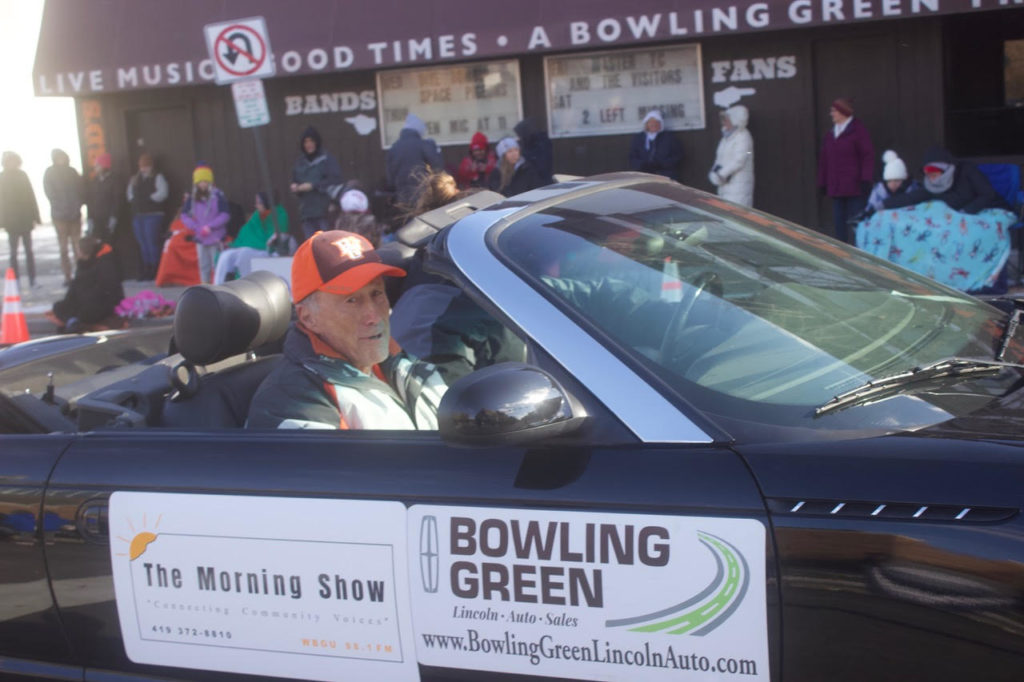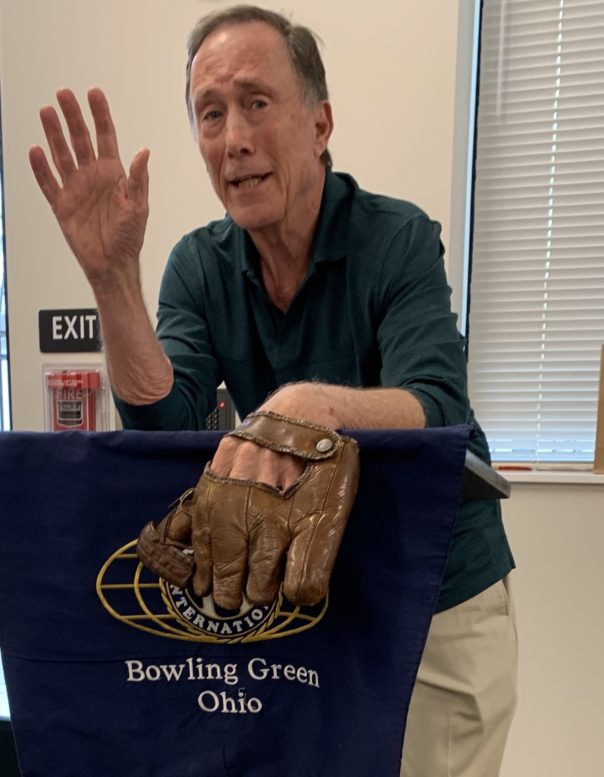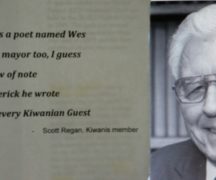By JULIE CARLE
BG Independent News
Baseball may not be the most-watched sport in America these days, but for Dave Horger, the sport still has a soft spot in his heart.
At Thursday’s Bowling Green Kiwanis Club meeting, Horger made a case for why baseball should still be considered America’s favorite pastime. The recognizable radio voice of Bowling Green news and sports on WFOB radio and then on WBGU-FM’s The Morning Show, used humor, facts and enthusiasm to convince his listeners of baseball’s status.
Horger said that baseball seems to have fallen behind football and the NFL. He estimated that 60 to 70 percent of Americans today would say they are football fans.
A George Carlin video disputed football’s hold a bit by comparing football and baseball:
Football is played on a gridiron compared to baseball on a diamond. Football begins in the fall when everything is dying and baseball starts in the spring at the beginning of new life. Football is a 20th century technological struggle compared to baseball, a 19th century pastoral game.
Football is concerned with downs and in baseball they are interested in who’s up.
“So, one could conclude that football is more popular because it’s a macho, manly sport, while baseball seems to be kind of sissified. So, let’s concede that football is the national pastime,” Horger joked.
To him, the more pertinent question is if baseball is as popular now as it used to be.
To prove that football has not always been the most-watched sport, he reflected on baseball in the 1950s, when the sport truly was the fan-favorite.
“Baseball in the 1950s was THE national pastime, no question,” Horger said. Baseball was at its best in the 1950s in part because it was the first full decade that Black players were allowed to play, including the talents of Jackie Robinson, Larry Doby, Willie Mays, Hank Aaron and Roberto Clemente.
“The NFL didn’t really start to catch the nation’s imagination until 1958,” he said.
Attendance figures tell a compelling story as well. In the 1950s when the average ticket price was $1.60, there were 16 teams in the league.
In 1950, there were 10 teams that drew one million people or more. In 1951, eight teams reached that milestone, and throughout the decade, at least half of the teams drew a million or more people each year. There were also three teams that drew two million people during the decade —the Yankees in 1950, the Milwaukee Braves in four separate years, and the Los Angeles Dodgers during their second year in L.A. in 1959.
During the latest full decade (2010-2019) “when baseball isn’t nearly as popular,” Horger said, “There are a total of 30 teams and only one team failed to draw a million people. That was Miami, thanks to a lousy ballpark and a lousy team.”
Additionally, numerous times during that decade, three million people paid to see baseballgames. The Yankees and the Cardinals drew three million people every year in that decade. The Angels, Dodgers and Giants drew three million fans nine out of those 10 years. And the Cubs, Red Sox, Tigers, Twins, Rangers, Blue Jays, and Phillies had three million in attendance at least once during the decade.
During those same years, other ball clubs recorded two million fans a total of 145 times.
Horger also pointed out that for this year’s World Series, people paid an average of $3,000 per ticket for the third, fourth and fifth games, with some paying as much as $27,000.
Also, Philadelphia hosted a ticket lottery this year that offered tickets for $100-$200, and more than one million people signed up for a chance to win.
“If people are willing to pay that much, baseball must be kind of popular.”

Even if baseball doesn’t return to its former glory, Horger said it was the sport that most helped him through the fight of his life after he was diagnosed with Multiple Myeloma in 2013.
“My life, up to that point, had been pretty normal, with the exception of getting up at 3:15 every morning to drive around the community to get the latest gas prices to report on the radio,” he said with a laugh.
“The cancer just came out of left field and knocked me right off my feet, right off the air.”
He went from a fairly, normal life to a life when the nothing was normal except a three-hour block of time when he could enjoy watching or listening to a baseball game.
“Baseball helped me get through the most difficult time of my life physically. It’s because baseball is there if you want it, and baseball is there if you need it. And I did.”





